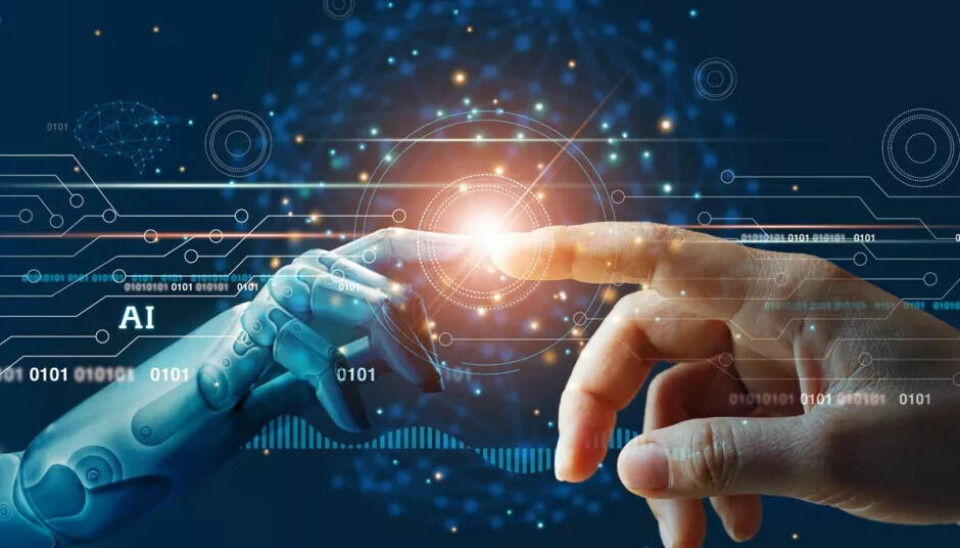Mechanical engineering summit salon
AI and digital twins: These are the hurdles and opportunities

Generative AI, in conjunction with digital twins, is changing how products are developed. Dieter-Friedrich Sauer, member of the management board and senior director at Dassault Systèmes, discusses the hurdles and opportunities of innovative technologies.
What preliminary work is typically involved in bringing digital twins into practice, for example, in the preparation of data models and architectures?
Dieter-Friedrich Sauer: High data quality is a crucial prerequisite for the successful and rapid implementation of virtual twins. Especially in mechanical and plant engineering, where products are often in use for decades, many companies face the challenge that the underlying data is not sufficiently structured or up-to-date. In addition, the relevant information comes from numerous sources - such as various CAD, MES, ERP systems, or IoT applications.
Depending on the purpose of the virtual twin, the question also arises as to which and how much of this data should be integrated into the model at all. At Dassault Systèmes, we prefer to speak of the virtual twin in this context, which integrates into a digital environment, continuously evolves, and can be used in real-time - for example, for configuration, simulation, maintenance, or training. In contrast, the digital twin focuses more on the physical representation, such as through digital CAD data.
Another central aspect is the question of the operating model: should the virtual twin be operated on-premises or in the cloud? While native SaaS solutions initially offer less room for individual customization, they score with automatic updates, high scalability, and future-proofing. For this 'out-of-the-box' functionality, we provide standardized processes. On-premises solutions, on the other hand, offer more room for customization but come with higher long-term maintenance and management efforts.
What are the biggest challenges in implementing digital twin concepts?

Sauer: In addition to the already mentioned data quality and the still existing data silos, technological complexity also represents a central hurdle. In many companies, hundreds of applications are in use - often even central IT departments are unclear about what individual applications are used for. A systematic cleanup of the IT landscape is accordingly demanding. Even more serious, however, is often the necessary cultural and organizational change that the introduction of virtual twins brings with it. Although many companies have long recognized the strategic importance of these projects, their success depends significantly on acceptance within the workforce. Introducing new technologies and modernizing the IT architecture at the same time is not purely a technical project - it is a transformation process.
The decision to use a virtual twin - which is usually based on a powerful PLM system - is often prepared by specialist departments and finally made top-down. However, the real challenge lies in sustainably embedding this change into the organization and actively involving employees. There is also economic pressure: the return on investment should become visible as soon as possible. Department heads are under double pressure - to introduce new solutions and at the same time realize savings potential.
What benefits can machine and plant manufacturers achieve with AI and how do customers benefit from it?
Sauer: Classic V-model processes in product development can be made significantly more efficient through the use of artificial intelligence. Especially in the service area, which represents a significant share of revenue for many companies, AI and digital twins enable new, individually tailored offerings. They increase the timeliness throughout the entire product lifecycle. Digital representations of each individual customer installation create more transparency in spare parts management.
Before a product is actually manufactured, it can be virtually checked and tested to see if it fits into existing production lines. Adjustments can be made and optimized in advance. This shortens development times, reduces costs, and minimizes risks. At the same time, quality and efficiency improve over the entire lifecycle.
Why is it so important for mechanical and plant engineering to integrate (generative) AI into product development, products, and services?
Sauer: The use of generative AI helps mechanical and plant engineering to make complexity manageable, accelerate development processes, and specifically address the shortage of skilled workers. Our so-called virtual companions are not designed to replace personnel, but to support the workforce as digital companions for more efficient work, as the name suggests.
An example of integration: Dassault Systèmes announced a technology package called '3D UNIV+RSES' in early February, which integrates generative AI in different application scenarios. We have customers who use AI, for example, for resource efficiency and reduction of comparable parts - by replacing hundreds of equally sized small parts with a few standardized components. Generative AI also makes it possible to control the entire product development process to a certain extent using natural language.
Especially in the early design phase, developers benefit from dialog-based designs based on existing models. The AI can generate new component proposals and specifically draw on existing developments. At the same time, specific requirements and manufacturing processes such as 3D printing can be considered - for example, in terms of stiffness, weight, material usage, or the targeted avoidance of certain substances. Especially with regard to sustainability, this is a decisive advantage. This technology is a real game changer.
How well are companies already positioned here?
Sauer: In conversations with our customers and partners, it becomes clear: The interest in using artificial intelligence is great. AI is no longer a short-term hype but has developed into a solid trend - not least thanks to an increasing number of concrete use cases that impressively demonstrate its potential. And yet the industry as a whole is still in its infancy.
Decision-makers are under significant pressure to deliver visible results as quickly as possible. It is all the more important not to rely on short-term successes but to pursue a long-term sustainable strategy: Because quick fixes can hardly integrate AI sustainably into business practice.
How important are more sustainable product designs for the industry?
Sauer: Reusability is a central idea of generative design - not only from an ecological but also from an economic perspective. The goal is to design products so that they can be more easily returned to the material cycle at the end of their life cycle. At the same time, the ecological footprint is coming more into focus.
To include this aspect in the early phases, for example, a life cycle assessment helps: It supports developers in calculating the carbon footprint of a product design and in evaluating early on the impact of supplier and material selection on sustainability.
What measures have typically been implemented so far to make products fit for the circular economy? In which areas do you see further possibilities to increase the sustainability of products in the future?
Sauer: In the German economy, the topic of sustainability is already being approached very consciously. There is a high level of sensitivity, and sustainability aspects are often considered from the beginning. However, in some areas, there is still a need for adjustment in regulatory frameworks - for example, in digital documentation, which could save millions of tons of paper. Currently, a printed version in multiple languages is still required in many places.
Especially in the context of the circular economy and sustainability, it becomes clear: a stable digital foundation is essential. The more fragmented the IT landscapes in companies, the more difficult it is to consolidate data across systems. There are still significant hurdles here. Virtual twins make a valuable contribution to integrating components into new products or processes more quickly and making informed decisions about reusability. This requires standards - and also collaboration across company boundaries. Optimization within individual companies is no longer sufficient.
In our industrial network, we rely on as many companies as possible to support the Asset Administration Shell of the Industrial Digital Twin Association to efficiently exchange data along the entire value chain. Only through joint efforts and the consistent use of digital solutions and standards can the sustainability of products be secured in the long term and the circular economy be effectively advanced.